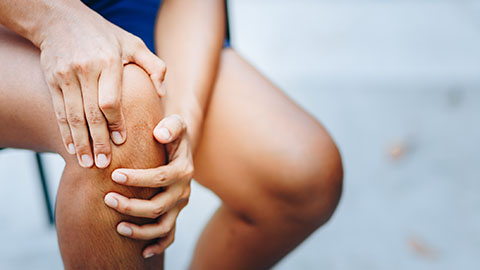
A young woman has lots of muscle pain after her soccer game. A great time to receive massage, right? Not this time. Listen in for a case where massage could cause renal damage.
Resources:
Chen, J. et al. “Rhabdomyolysis After the Use of Percussion Massage Gun: A Case Report.” Physical Therapy 101, no. 1. https://doi.org/10.1093/ptj/pzaa199.
Ingraham, Paul. “Poisoned by Massage!” Last modified November 8, 2020. www.painscience.com/articles/poisoned-by-massage.php.
Lai, M.-Y. et al. “Fever with Acute Renal Failure Due to Body Massage-Induced Rhabdomyolysis.” Nephrology Dialysis Transplantation 21, no. 1: 233–34. https://doi.org/10.1093/ndt/gfi158.
Robinson, Jennifer ed. “Rhabdomyolysis.” March 17, 2021. www.webmd.com/a-to-z-guides/rhabdomyolysis-symptoms-causes-treatments.


This podcast sponsored by:
About Anatomy Trains:
Anatomy Trains is a global leader in online anatomy education and also provides in-classroom certification programs forstructuralintegration in the US, Canada, Australia, Europe, Japan, and China, as well as fresh-tissue cadaverdissectionlabs and weekend courses. The work of Anatomy Trains originated with founder Tom Myers, who mapped the human body into 13 myofascial meridians in his original book, currently in itsfourthedition and translated into 12 languages. The principles of Anatomy Trains are used by osteopaths,physicaltherapists,bodyworkers,massagetherapists,personaltrainers,yoga,Pilates,Gyrotonics,and other body-minded manual therapists and movement professionals. Anatomy Trains inspires these practitioners to work with holistic anatomy in treating system-wide patterns to provide improved client outcomes in terms of structure and function.
Website:anatomytrains.com
Email:info@anatomytrains.com
Facebook:facebook.com/AnatomyTrains
Instagram: instagram.com/anatomytrainsofficial
0:00:00.0 Speaker 1: Ruth Werner's best-selling book, A Massage Therapist's Guide to Pathology, is a highly regarded comprehensive resource that sets the standard for pathology education. Written for massage therapy students and practitioners, this ground-breaking resource serves up a comprehensive review of the pathophysiology, signs, symptoms, and treatment of more than 500 diseases and disorders. Learn more at booksofdiscovery.com.
0:00:32.4 Speaker 2: Anatomy Trains is happy to announce our return to the dissection lab in person, January 10th to the 14th, 2022 at the laboratory of anatomical enlightenment in Boulder, Colorado. We are thrilled to be back in the lab with Anatomy Trains' author Tom Myers and master dissector, Todd Garcia. Join students from around the world and from all types of manual, movement, and fitness professions to explore the real human form, not the images you get from books. This is an exclusive invitation, email info@anatomytrains.com if you'd like to join us in the lab.
[music]
0:01:17.2 Ruth Werner: Hi, and welcome to I Have A Client Who, pathology conversations with Ruth Werner. The podcast where I will discuss your real life stories about clients with conditions that are perplexing or confusing. I am Ruth Werner, author of A Massage Therapist's Guide to Pathology, and I have spent decades studying, writing about, and teaching about where massage therapy intersects with diseases and conditions that might limit our client's health. We almost always have something good to offer even with our most challenged clients, but we need to figure out a way to do that safely, effectively and within our scope of practice. And sometimes as we have all learned that is harder than it looks. I'm excited to share this week's story with you because it's about a topic that I'm very interested in, but it doesn't happen often enough that I've had to pursue it for the textbook. So I've known about this condition, but I've never really done a deep dive, and in the process of preparing this for you today, I have learned more about rhabdomyolysis than anyone would ever really want to know.
0:02:27.3 RW: This episode of I Have A Client Who comes from a massage therapist in Texas, who shared this story. I have a client who had a regular appointment, but then she called to see if her daughter could take it because she was in a lot of pain. The daughter was a 21-year-old college student and an elite soccer player. She'd been complaining of back pain for a while, but after a particularly stressful game that went into double overtime, she felt really bad with all over aching, cramping, swelling, and dark urine. Now, I have some background in athletic training, and I used to be a competitive bodybuilder, so I knew some of the warning signs, and I knew that I did not want to try to work with this person. It turns out she ended up in the hospital with rhabdomyolysis for several days. They discharged her, but they said that her levels were still elevated. So, we have a high level athlete used to running and playing hard, she already has some back pain, but after this one particular game, she has a sudden onset of lots of other alarming signs and symptoms.
0:03:31.7 RW: What in the world is going on here? If we take this word apart, rhabdomyolysis breaks down like this, rhabdo means rod, which according to some sources refers to striated muscle, myo of course is muscle, and lysis means destruction. So rhabdomyolysis refers to the destruction of voluntary or skeletal muscle tissue. But what this description does not reveal is the consequences of this degeneration. When skeletal muscle tissue breaks down in some accelerated or traumatic or otherwise pathologic way, the by-products of those myo fibers are incredibly toxic. And one of the reasons that rhabdomyolysis is considered to be a medical emergency is that left untreated, it can cause serious, even life-threatening damage to the kidneys. Before I begin working on this episode, my understanding of rhabdo was that it was usually related to a specific injury or trauma. It turns up in the medical literature often as a complication of a crushing blow, a car accident, an electrical injury, or maybe seen with someone who's been unconscious for a long time, and they've been laying on some part of their body in such a way that the circulation was cut off and muscle tissue dies.
0:04:56.6 RW: In other words, it's related to a specific and usually localised trauma. And that did not appear to be the situation for our soccer player. I wondered if this young woman had been kicked or had a fall or somehow had a specific kind of muscle injury, and that doesn't seem to be the case. Instead, what probably happened for her is an all-over full body overuse crisis. This is even more dangerous than a specific injury, because there's more muscle mass that can contribute to kidney damage. Other non-traumatic causes of acute rhabdo can include the over-use of drugs or alcohol, some medications, including antipsychotics and statins or a very high fever, which might be why there were some reports of rhabdo as a complication of COVID-19. Viral and bacterial infections may also lead to rapid muscle breakdown and kidney damage.
0:05:56.8 RW: The most typical presentation of rhabdo includes three main features, muscle pain, weakness, and dark urine. This is sometimes called cola-colored or tea-colored urine, and it's a sign that the kidneys are in distress. However, some rhabdo patients don't have a lot of muscular symptoms and their main complaints might be abdominal pain, nausea, and vomiting and fever, rapid heart rate, dehydration, confusion, and loss of consciousness. The main diagnostic indicator for rhabdo is the presence of creatine kinase in the blood. This is a product of that myoglobin breakdown. So when this young woman was discharged, even though her "levels were high," this probably refers to her circulating creatine kinase. Muscle breakdown can also change potassium levels in the blood, which can lead to arrhythmia or even cardiac arrest. And there's an association between rhabdo and compartment syndrome, a situation where too much fluid accumulates within a fascial compartment and there's lots of secondary tissue damage. I would love to do an episode on compartment syndrome, so by all means, send to me or I Have A Client Who Stories about that.
0:07:17.6 RW: The good news for this soccer player and other people with rhabdo is that early treatment usually has excellent outcomes, even the kidney damage can be reversed if it's caught early enough. Patients are treated with IV fluids and substances to adjust chemical levels and maybe temporary dialysis if those kidneys just need a break. I found a wonderful article on the relationship between massage and rhabdo at painscience.com, and I will give a link in the show notes. Here Paul Ingraham suggests that general muscle overwork that leaves us sore and tired could be classified as a type of mild rhabdo, because it results in low-level minor muscle injuries with by-products that the kidneys have to expel and that can leave us feeling worn out and fatigued. Likewise, the common overworked feelings that sometimes follows a really rigorous massage could be related to low-grade muscle damage, and what we're calling here mild rhabdomyolysis. And there are a couple of documented case reports of very rigorous massage causing acute medical emergency levels of rhabdomyolysis.
0:08:31.0 RW: One was with a 25-year-old woman cyclist, who after a hard workout received manual therapy, including a percussive massage gun to her thigh muscles. Another was an 88-year-old generally healthy man who received lots of massage, but one day he had a two-hour session from two practitioners working together, and this did not go well for him. Both of these clients ended up in the hospital with renal damage. The thing about adverse events and massage though, is that unless they are documented and explained by a clinician and then published in an academic peer review journal, they don't get into the medical record, even if they happen a lot. People reporting post-massage soreness and general malaises, that's not rare, but it is also not something that usually requires medical attention, so we have no idea how often this happens or how serious it might be.
0:09:28.6 RW: Over-treatment with massage can become a big deal though, when it happens with clients who might already be dehydrated or overworked, or otherwise not capable of metabolically managing the demands of very rigorous massage. And all of this brings us back to our soccer player with overall sudden onset soreness, weakness, cramping, swelling, and dark urine. Our contributor today was absolutely on the right track when they deferred working with her, as massage would only have made this bad situation much worse. So good job on the saying no contributor, and when this young woman is feeling better and back to her normal levels of activity, I bet she will really enjoy some time on your table.
0:10:16.1 RW: Hey everybody, thanks for listening to I Have A Client Who, pathology conversations with Ruth Werner. Remember, you can send me your I Have A Client Who stories to ihaveaclientwho@abmp.com. That's ihaveaclientwho, all one word, all lowercase @abmp.com. I can't wait to see what you send me and I'll see you next time.
[music]